Are classic Imprezas easy to maintain?
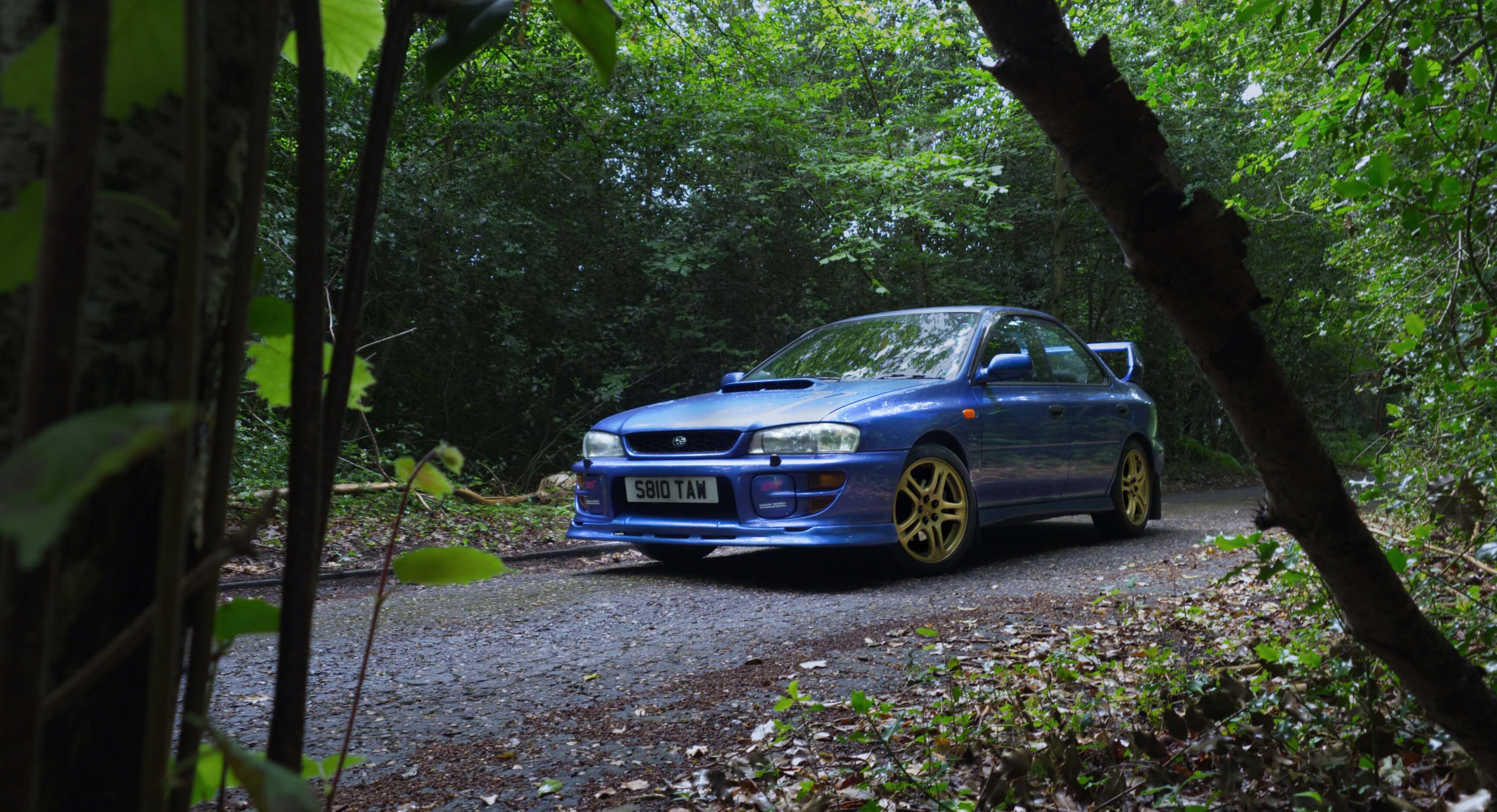
Any more than a cursory glance online would have you convinced that Subaru engines explode if you look at them wrong, blow their head gaskets every week, and leak enough oil to make the folks at BP feel a bit uncomfortable - but is that true?
Myth vs Reality
While it's totally, unrefutably, true that many Subarus have blown their engines and/or head gaskets, I'd wager that less than 5% of those cars were stock. The trouble, as always, comes the people mess with things that they shouldn't. Subaru EJ20s are actually very reliable, trouble free engines when left stock.
They also come from a time when ECUs weren't quite as dynamic as as they are today. They aren't able to learn "on the fly" as modern ECUs are, and as such, when you tinker and tweak and change critical elements, the ECU will still be programmed for the stock parameters.
An early lesson I learned (thankfully not the hard way) was that people aren't joking when they say "Even changing the air intake needs a tune". Coming from modern cars, this sounds crazy, but it's totally true. Once you understand the "set in stone" nature of the GC8 ECU, this becomes much easier to understand - and, crucially - to plan for.
But we're not here to talk about exploding engines, we're here to talk about maintenance.
Are Classic Subarus easy to maintain?
Honestly, yes for the most part. They're very simple engines at heart, and the engine bay is generously-spaced with easy access to most parts. Except the spark plugs, that's a horrible job.
When it comes to routine servicing; fluids, consumables etc. They're very easy to do yourself on your driveway, and for the most part, that's all you will need to do. Even changing braking hardware is incredibly straightforward. Classic Subarus come from a time before computers took over cars, so there's no coding or computer resetting to be done each time you perform a service on any part of the car.
Keep up with the service schedule in your owners book, but don't follow it religiously. Use common sense when it comes to service items and when they need doing.
As Colin McRae said when he was asked about his approach to routine maintenance: "If in doubt, just do it so you know it's done and won't have to worry about it for a while."
Classic Imprezas can leak fluids, but they shouldn't. Generally speaking, when something is leaking we're dealing with either incorrectly fitted parts or general wear and tear. I have a leaky power steering rack. It leaks just enough to cake the rack itself in fluid and prevent it rusting (yay!) but not enough to drip on the floor or lose any measurable amount of fluid over time, so I've left it. I eventually want to get a STi quick-steering rack, so the leak will be fixed when I replace the part. Oh, speaking of rust...
Rust
Rust is unquestionably the Final Boss of classic Subaru ownership. That stuff gets everywhere and I can seriously ruin your day if you aren't prepared. Anywhere exposed to the elements is going to be caked in it. Anywhere inside the car that accumulates moisture will eventually be covered in it, too.
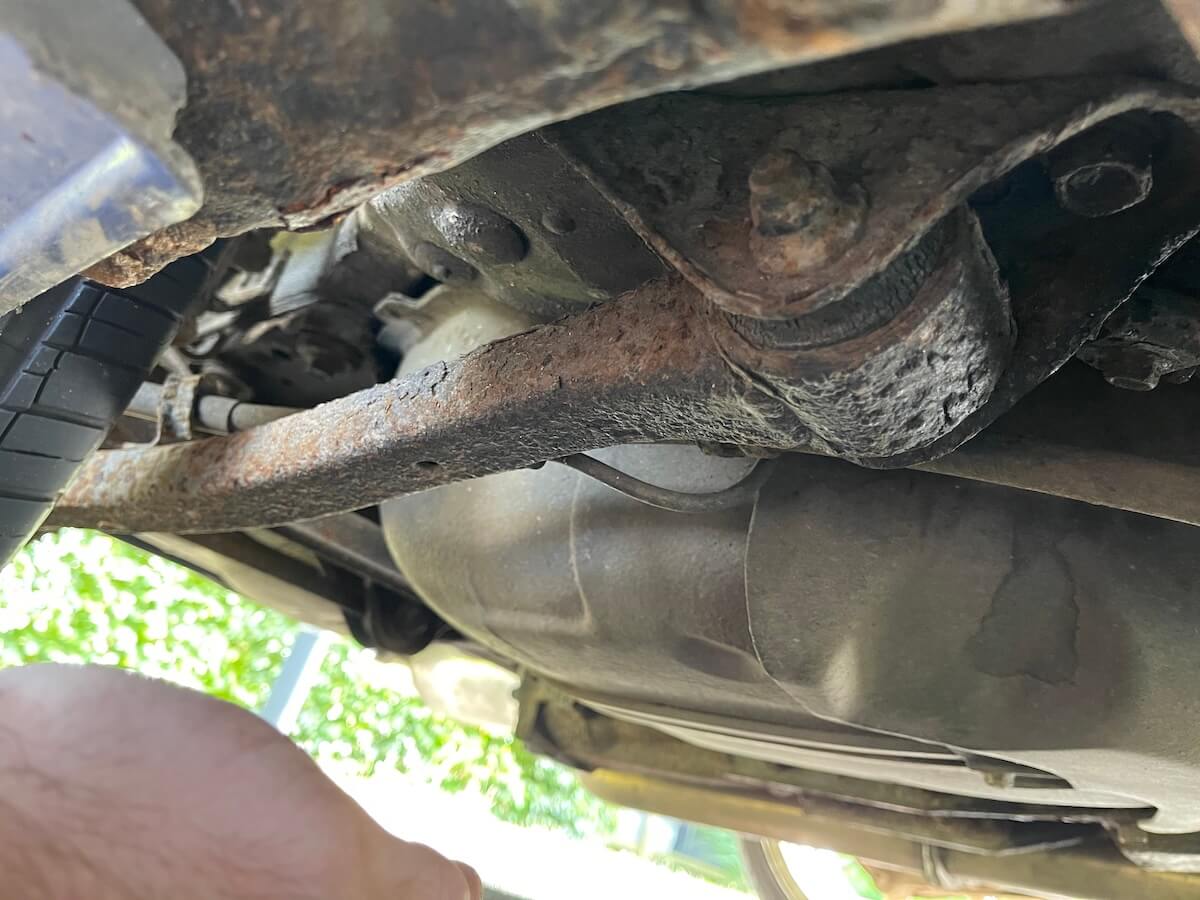
Surface rust is fine, structural rust is definitely not fine. Do factor in that rust can generally only get worse, so the earlier you treat it (which you should) the better. Parts under the car will rust and become harder to replace, but at the end of the day if you're replacing them you don't have to be too precious about their removal.
Classic Imprezas are known to rust in three key areas: The boot, the rear quarters and the sills.
The boot
Subarus and boot leaks go together like beer and chips. Common areas for leaks to occur are:
The bolts that hold the spoiler onto the boot lid. Over time the foam membrane between your spoiler and the boot lid degrades and lets water get in. That water usually has nowhere else to go other than through the bolt, and down into the boot.
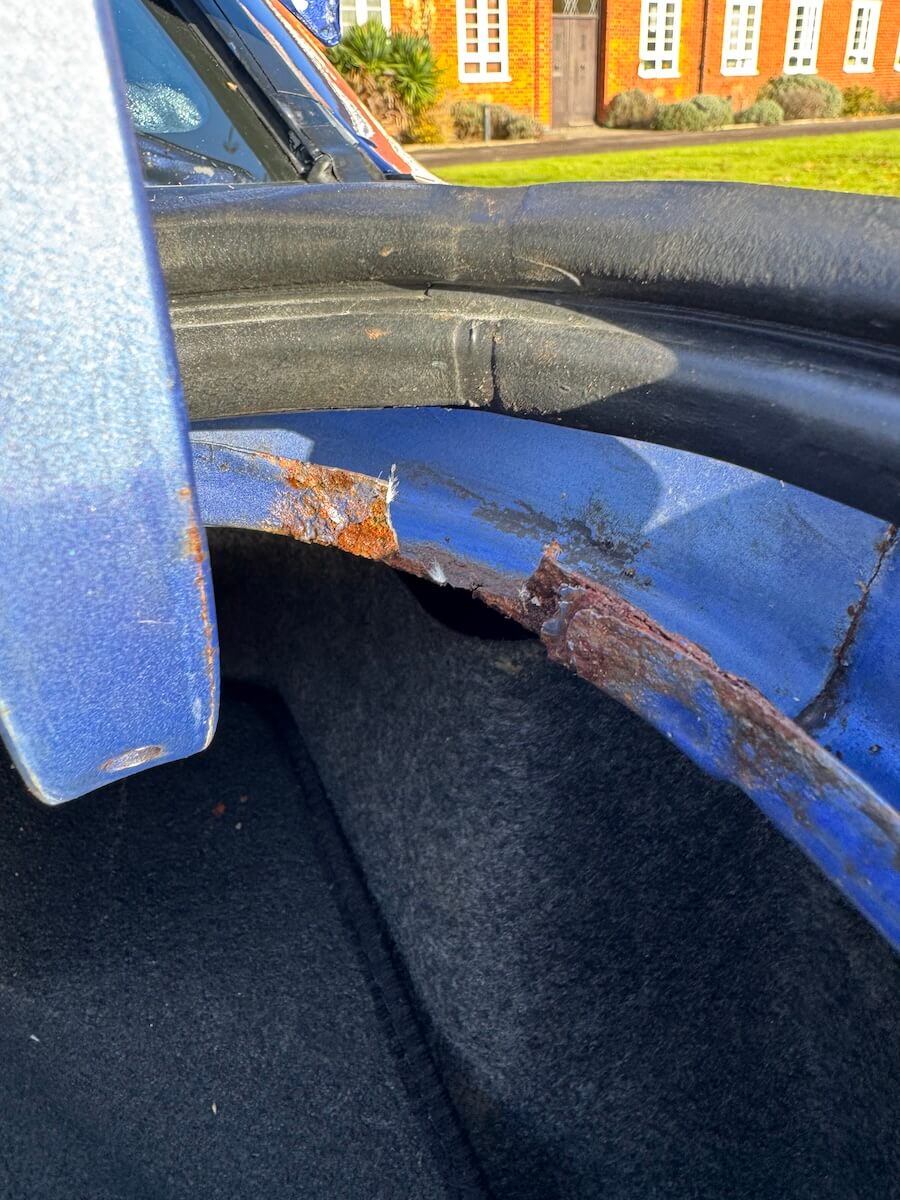 The water channel around the boot opening (and especially under the rubber seal). Leaves and detritus build up in the channel and cause water to pool, seap up under the rubber sill and corrode it away. Lift up the rubber seal and have a good look (and clean). If yours has rusted away and left holes like mine, you don't need to panic too much, just clean it down to bare metal, surface treat it with something to tackle the rust and seal the metal, and then rebuild the lip with duct tape or something similar. Yes, it's hacky and a bit of a 'patch' rather than a fix, but its better than a leaky boot.
The water channel around the boot opening (and especially under the rubber seal). Leaves and detritus build up in the channel and cause water to pool, seap up under the rubber sill and corrode it away. Lift up the rubber seal and have a good look (and clean). If yours has rusted away and left holes like mine, you don't need to panic too much, just clean it down to bare metal, surface treat it with something to tackle the rust and seal the metal, and then rebuild the lip with duct tape or something similar. Yes, it's hacky and a bit of a 'patch' rather than a fix, but its better than a leaky boot.
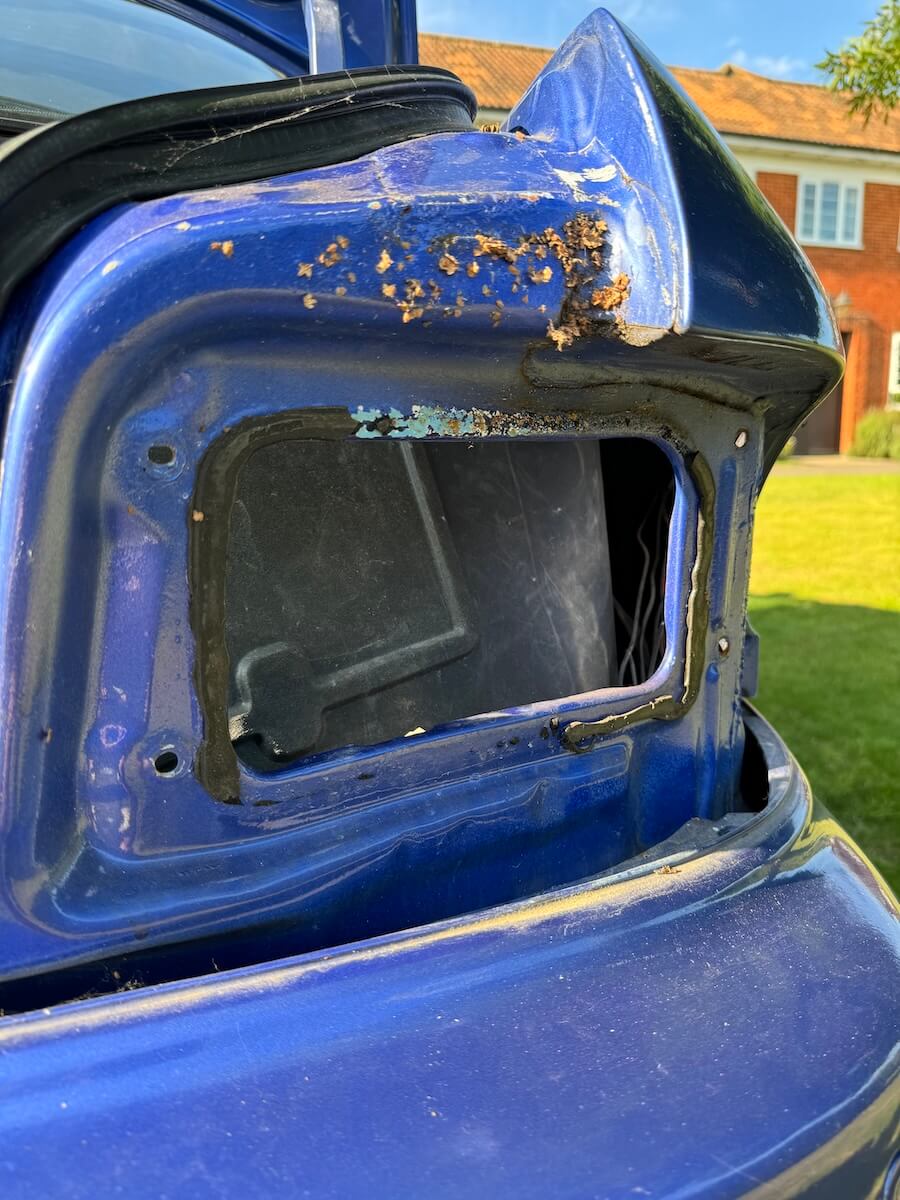 The tail lights. These are "sealed" using this horrible butyl substance that does degrade over time and the seal is compromised every time someone refits the tail lights. You can get upgraded neoprene seals which do a much better job and usually fix this issue.
The tail lights. These are "sealed" using this horrible butyl substance that does degrade over time and the seal is compromised every time someone refits the tail lights. You can get upgraded neoprene seals which do a much better job and usually fix this issue.
It doesn't have to be a terrible experience, though. Treat it the same way you'd eat an elephant: A little bit at a time. When you remove a rusty bolt, clean the area and replace it with a new bolt. Remove rusty parts and replace them with clean surface-treated parts. Do your future self a favour.
The rear quarters
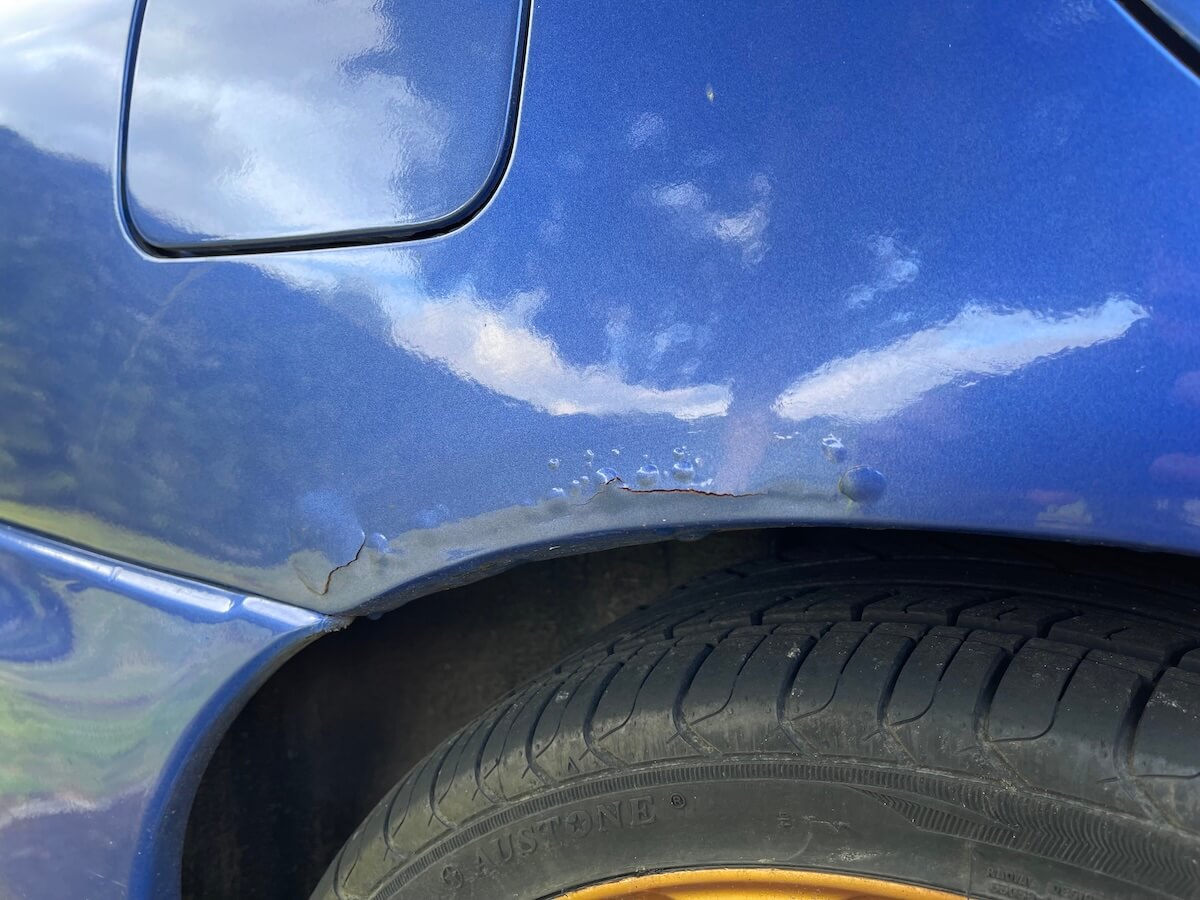 Blistering above your rear wheels? What a pain. Unfortunately it's usually symptomatic of issues inside of the panel as well, so be sure to get it done properly. The outer blistering is purely cosmetic, but if the inner panels are rotten it's getting quite close to the boot structural panels so you may want to take a look. Luckily, repair panels are available at lots of places, so it can be done by any decent body shop without hassle.
Blistering above your rear wheels? What a pain. Unfortunately it's usually symptomatic of issues inside of the panel as well, so be sure to get it done properly. The outer blistering is purely cosmetic, but if the inner panels are rotten it's getting quite close to the boot structural panels so you may want to take a look. Luckily, repair panels are available at lots of places, so it can be done by any decent body shop without hassle.
The rear strut towers are also known to go. Lift up the parcel shelf and have a Quick Look there, and also take off the rear wheels and have a look at the inside of the strut with a torch. If these go it's a major structural issue, so get it done as a priority. It isn't a terribly hard job to do, and it's one that a lot of places have done in the past. Indeed, your car - like mine - may have already had it done!
The sills
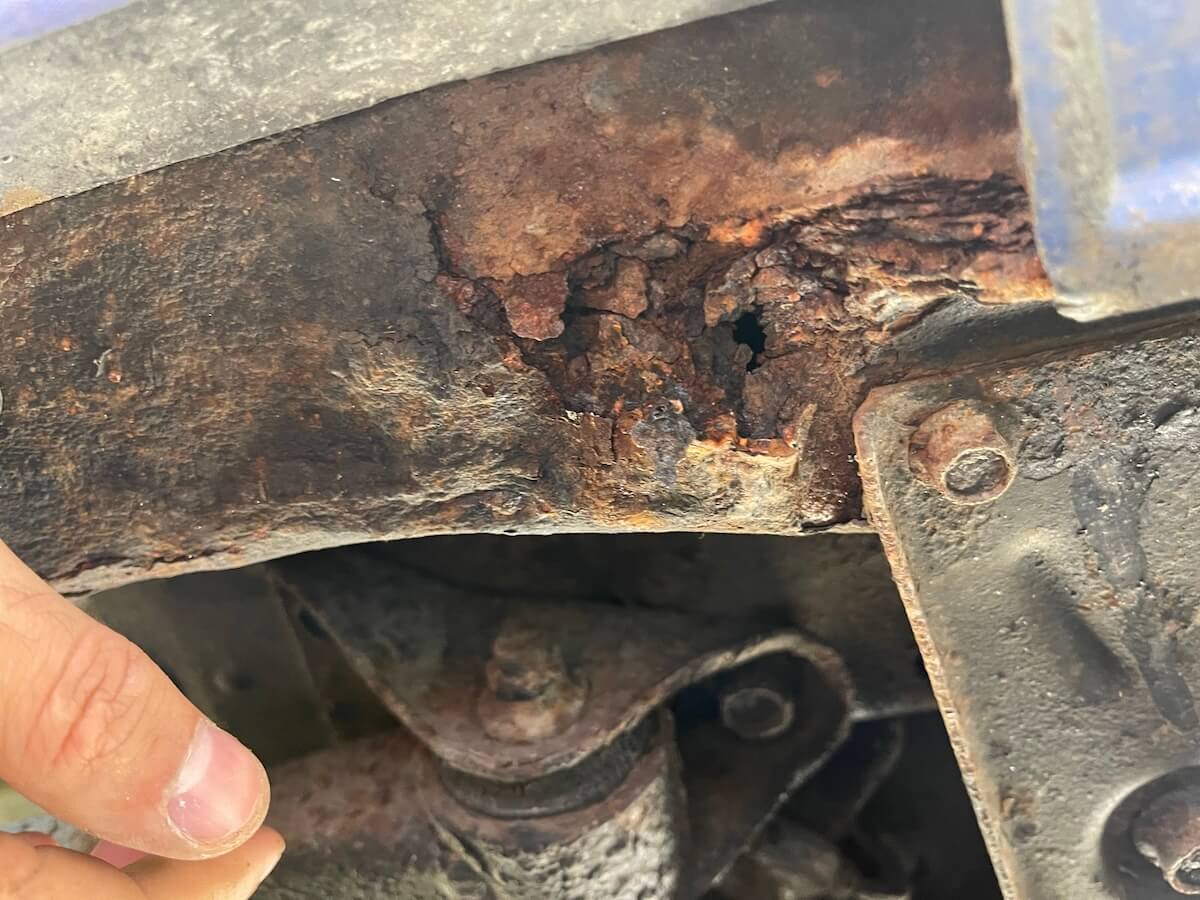 The sills that run underneath the car are notorious for rusting away. These sills are also the jacking points, and connect to the diff outrigger, so you want to fix any rust down there ASAP. A pain, and a bit of an expensive fix but something that needs to be done both for your safety and the longevity of the car.
The sills that run underneath the car are notorious for rusting away. These sills are also the jacking points, and connect to the diff outrigger, so you want to fix any rust down there ASAP. A pain, and a bit of an expensive fix but something that needs to be done both for your safety and the longevity of the car.
Lots of people on the internet use phrases like "cancer" when they describe rusting on cars, and yes, I get it - if you leave it totally unchecked, it will likely mean the end of the car - so get it checked. If you care about the car, just pony up the cash and get it done and then you don't need to worry about it for a long time. Yes, it will almost certainly come back at some point (maybe in a different location) but regular checks and tackling things early make it a far less painful experience.
Parts availability
Here in the UK we have a couple of really good stockists. I use Import Car Parts (http://importcarparts.co.uk) for a lot of my parts. They have a good mix of genuine and good-quality reproduced parts and still get new stock quite regularly.
Roger Clark Motorsport (http://rogerclarkmotorsport.co.uk) are great for upgraded parts which are on the expensive side for sure, but always very good quality.
Breakers are a good place to get hard-to-find parts, but their quality varies massively depending on the car in question.
For service items like oil and filters, pretty much anywhere will sell OEM equipment. You don't need to be fancy with your oils, just make sure it's the right grade and you change it regularly.
Coolant is a minefield, everyone has a different opinion on it but let me make it simple for you - Subaru Super Coolant. Subaru themselves approve it on ALL Impreza's down to V1. Yes, it's a bit more expensive, but it works and it takes all the questioning out of it.
That pretty much does it for maintenance. I could go into more detail, but the point here is that they aren't difficult to maintain and they don't require the princess treatment that some people seem to think that they do. Be sensible, treat it like an old car and drive it with mechanical sympathy and you probably won't have many problems.